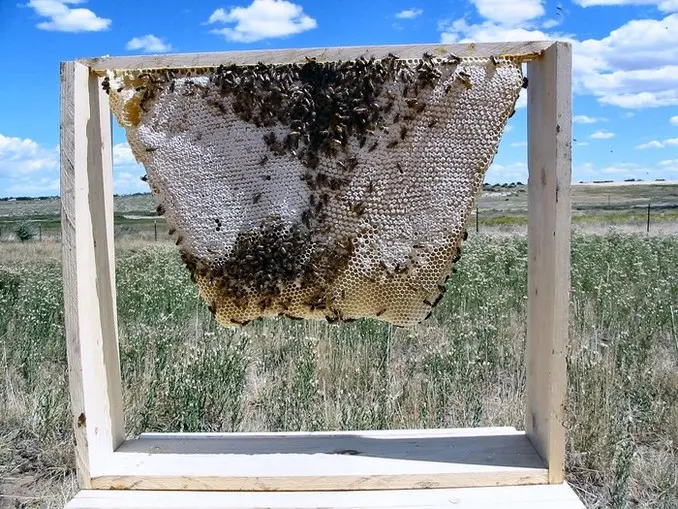Sweet Success in Beekeeping

-Hello, Honey!
Hey Bee Enthusiasts! 🐝 Ready for a sweet talk about honey production?
Let’s dive into the hive and explore the nectar of our buzzing buddies.
Bee’s Honey Business
Guess what? Bees aren’t mindless workers when it comes to floral sources. They’ve got a strategy. When they have enough reserves and a decent-sized colony, hive activities, especially foraging, take a chill pill. But here’s the kicker – exceptionally large honey surpluses don’t just happen. They need a bit of beekeeper magic.
Storing that golden excess honey:
- Unnecessarily ups the foraging ante.
- Stresses our bees as they prep for winter.
- Clogs up cells needed for winter and spring brood rearing.
Harvesting Honey Gold
Sad truth – if bees are left to their natural rhythm, a beekeeper won’t be swimming in honey. So, what’s the secret sauce? Managing comb and free space. Enough space ensures bees can:
- Keep the honey-making hustle alive.
- Store that sweet surplus.
- Maintain their winter pantry.
- Gracefully ease into winter mode.
The Art of Harvest
Frequent honey harvests are like choreography for beekeepers. But it’s a dance that demands:
- A deep understanding of seasonal nectar flows.
- Knowing each colony’s superpowers.
- Meeting winter prep requirements.
- Navigating the wild weather ride.
- jJggling equipment quirks.
Harvest too much, too soon? Hungry, bummed-out bees. Too little, not often enough? Bees hunker down, foraging takes a nosedive, and brood rearing gets a reality check.
Best advice – move gracefully in the honey dance. Harvest a tad earlier than later. And don’t overdo it. Quality over quantity, right?
Comb Tango
Picture this – a top bar hive’s honey production is a dance of:
- Gracefully rotating full combs away from the broodnest to the hive’s rear.
- Elegantly sliding in empty comb or top bars at the back of the broodnest.
Rotated comb stays pest-free and is harvested when winter needs come knocking. Plus, it’s a beekeeper’s convenience dream.
More Hives, More Honey?
Here’s a buzzworthy tip: when craving more honey, running another top bar hive is a breeze compared to pushing a hive to the max for mega honey production.
Top Bar Hive Magic
Now, let’s talk top bar hives versus the classic Langstroth. Brace yourselves – top bar hives might not rake in as much honey per hive as vertical hives. Especially true in areas with late nectar flows.
Early in the season, top bar hives steal the honey spotlight. But as the season unfolds, they take a breather:
- Hive vibes mellow.
- Bees get a bit too comfy.
- Comb drawing takes a siesta.
- Honey production lags behind those classic hives.
Sweet Spot of Lower Yields
Surprisingly, a lower honey yield is the beekeeper’s pot of gold if bees, pollination, or queen rearing are your hive priorities. Too much honey, beyond the bee’s needs, can be a sticky situation!
Did I just spill the honey beans? Yes, after drowning in honey supplies, I’m all about that bee-centric life. As a hobbyist, I’ve got more honey than I can honey-handle!
Ready to Harvest?
Feeling the honey harvest vibes? Time to harvest that liquid gold.
-Buzzing sweetly, D 🐝🤠
